Author: tsmadmin

by Nicolas Jafarieh, EVP, Sallie Mae | 06.10.2025
The Federal Government Allows Students and Families to Overborrow to Pay for College. It’s Time to Put an End to It.
The great promise of higher education has always been grounded in opportunity, personal and professional growth, and upward social mobility. Earning a degree equips students with the skills to compete in an evolving economy, increases lifetime earnings, and creates lasting multi-generational impact, especially for those from economically disadvantaged households.
Looking at lifetime earnings alone, the value of a higher education for the vast majority of Americans is undeniable. Sadly, these benefits are slipping away for too many. The cost of attendance is rising more rapidly than wages for college graduates, squeezing the “return on investment” for a degree. Since 2000, tuition at public four-year institutions has surged nearly 180 percent.

SOURCE: U.S. Census, Bureau of Labor Statistics and National Center for Education Statistics
Institutional spending on administrative expansion, facilities, and non-academic programs has led to an ‘arms race’ among schools with costs passed along to students and families, many of whom already struggled to make college affordable. The system also notoriously lacks transparency, ranging from admissions and selection criteria to the real cost of attendance, making it very difficult for families to comparison shop and make informed decisions.
A System That Fuels Rising Costs
The federal loan program, originally designed to provide better access to higher education, has made college less affordable, and ushered in an age of overborrowing. Each year, the government lends more than $80 billion to students and families. Over the last two decades, loan limits have gone up and the federal government allows students and families to borrow more and more, much of it without ever assessing their ability to repay this debt. The Federal Reserve Bank of New York found much of the increases in loan limits directly translated to tuition increases. And these tuition increases, in turn, are forcing students and families to borrow even more.
Federal Graduate and Parent loans are made in virtually unlimited amounts, and again, without any meaningful assessment of the borrower’s ability to repay them. This unconscionable practice has no equivalent anywhere in the financial world. The impact has been staggering. Today, 3.6 million families owe collectively more than $100 billion in Parent PLUS loans. Federal graduate lending has exploded, adding another $100 billion more to the federal balance sheet, accounting for nearly half of all newly issued federal student loans. These programs have been labeled ‘predatory’ from experts on both sides of the aisle, and polling confirms most Americans believe addressing the unlimited nature of federal loan programs will protect students, and make college more affordable. According to the Committee for a Responsible Budget, reforms to graduate lending alone could generate over $40 billion in savings over the next decade—money that could be used to expand Pell grants and need-based aid.
Redirecting Resources to Those Who Need Them Most
Pell Grants, once a cornerstone of college affordability for those who truly needed assistance, haven’t kept pace with rising tuition. They now cover less than 30 percent of the average cost at a four-year public university, down from nearly 80 percent in 1980. Meanwhile, partly the result of missteps like the recent FAFSA delays, more than $4 billion in Pell Grants went unclaimed last year— money that could have helped students who need it most. Increasing Pell Grants for those who need the most support is one of the most effective ways to reduce their reliance on borrowing and keep access to college within reach for all Americans.
Allowing students to use grant aid on non-traditional programs, including short-term job training or apprenticeships, would help more individuals find a long-term path to professional and financial success. A traditional 4-year college continues to be attractive for most, but it is not the right answer for everyone.
Fixing the system, however, isn’t just about shifting resources, it’s also about transparency and ensuring families can make informed choices. College admission is stressful, and offer letters compound the problem. Financial aid offers should be clear, standardized, and easy to compare, giving families the information to make responsible school selections and financial decisions. That is not the case today.
We also need to help more students complete their degree. The great promise of higher education comes not from earning a few credits but from walking across the graduation stage. According to the National Student Clearinghouse, the number of Americans who have some college experience but no degree has now reached a staggering 40 million. Sallie Mae has partnered with Delaware State University to study how near-completer students can be re-engaged and policy solutions that help them complete their degree.
The Need for Reform
By offering federal Graduate and Parent PLUS loans in virtually unlimited amounts, and without considering the borrower’s ability to repay them, the federal government continues to operate like a predatory lender that saddles families with unsustainable levels of debt. This isn’t a failure of students and families—it is a failure of policy. Without meaningful reform to curb overborrowing, the cost of college will keep rising, another generation of students will keep taking on unaffordable debt, and taxpayers will keep footing the bill.
The solutions exist. Now is the time to act.

06.10.2025
Reforming the System to End the Cycle of Unsustainable Federal Student Loan Debt
The federal government lends over $80 billion in student loans every year, yet the system too often fails those it was designed to help and continues to allow far too many students and families to overborrow to pay for higher education. Some federal student loans, which includes Graduate and Parent loans, are made in virtually unlimited amounts and without meaningful underwriting, often to students and parents who are not able to pay them back. This has contributed to overborrowing and the rising cost of higher education.
In addition, the system notoriously lacks transparency, ranging from admissions and selection criteria to the real cost of attendance, making it very difficult for families to comparison shop and make informed decisions.
Addressing these issues would bring long-lasting solutions that are good for students, parents, and the federal higher education system as a whole.
Three Recommendations for Reform
1. Address college costs and limit overborrowing
Americans hold roughly $1.74 trillion in student loan debt as of the second quarter of 2024. Of that total, roughly 93% are made by the government. The remaining 7% are private student loans, which are credit based and underwritten by private lenders, who assess ability to repay before making a loan.
One of the biggest drivers of unsustainable debt is the federal program’s allowance for near-unlimited borrowing—including loans to parents that largely do not assess their ability to repay. These loans now total more than $100 billion for more than 3 million families. Federal graduate lending has also exploded, adding another $100 billion more to the federal balance sheet, accounting for nearly half of all newly issued federal student loans.
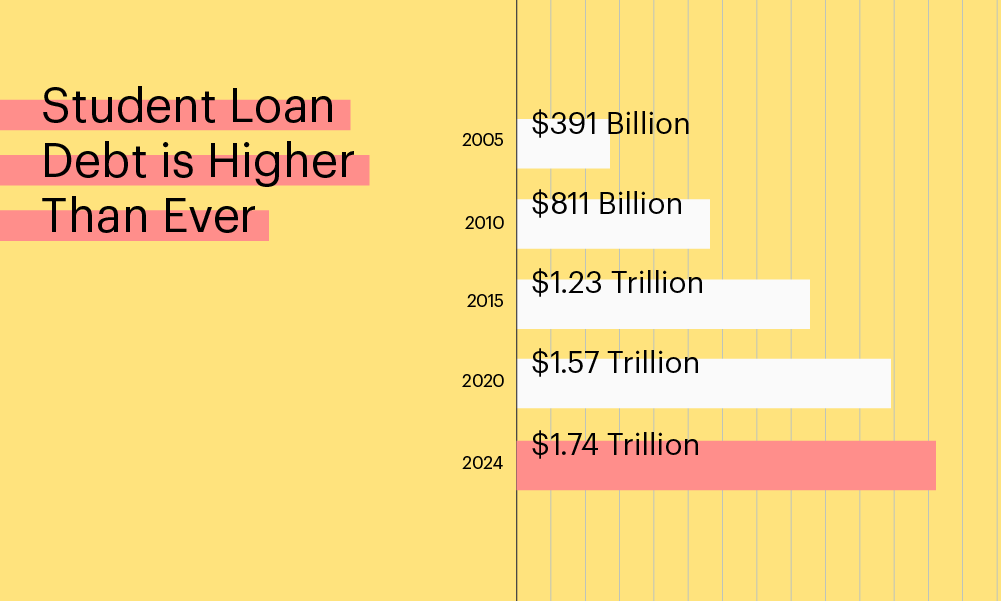
These programs have been labeled ‘predatory’ from experts on both sides of the aisle, and polling confirms most Americans believe addressing the unlimitednature of federal loan programs will protect students, and make college more affordable.
By allowing virtually unlimited borrowing without considering the ability to repay, the federal program continues to create unsustainable debt levels and limits incentives to explore affordable education options. Putting reasonable limits on these federal loan programs would protect families from taking on more than they can afford to repay and encourage students to consider all educational options, bending the curve of rising college costs.
2. Focus resources on those who need the most support
Access to higher education remains uneven. The federal student loan program continues to do too much for too many and not enough for those who need the most support. Too often, students from underserved communities – many of whom are first-generation college students — lack the tools and resources needed to make well-informed, confident decisions about paying for their higher education.
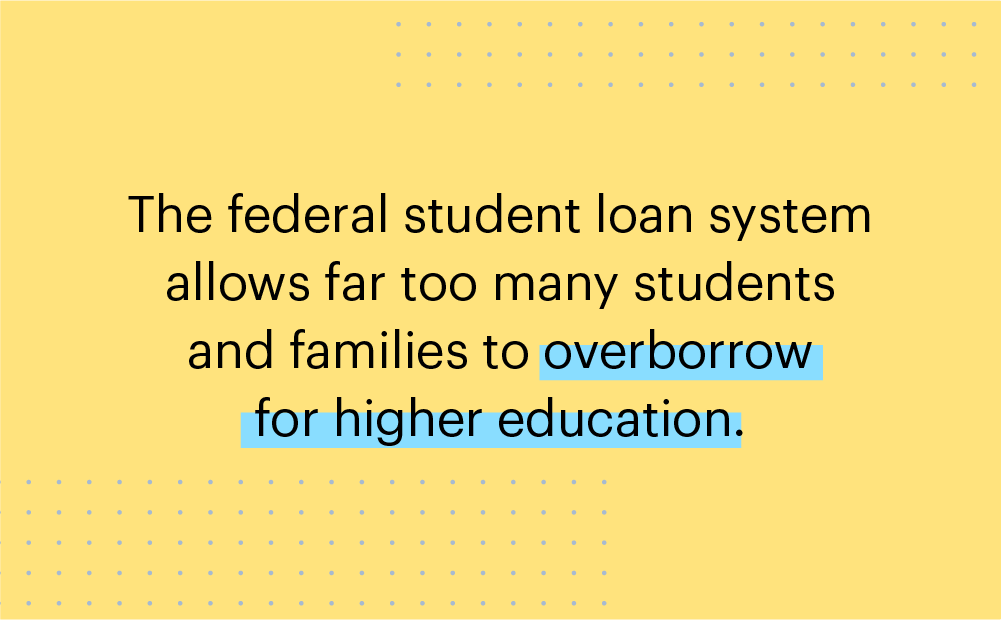
Borrowing should never be the first option for paying for college, but the current federal financial aid system is poorly designed to avoid it. Pell Grants, once a cornerstone of college affordability for those who truly needed assistance, haven’t kept pace with rising tuition. They now cover less than 30 percent of the average cost at a four-year public university, down from nearly 80 percent in 1980. Redirecting resources to expand Pell Grants could boost enrollment and retention for students who show financial need. Increasing Pell Grants for those who need the most support is one of the most effective ways to reduce their reliance on borrowing and keep access to college within reach for more students.
We also need to make it easier for them to apply. In 2024, more than $4 billion in Pell Grants went unclaimed, money that could have put higher education within reach of students who need it most. Reforms to graduate lending could generate more than $40 billion in federal savings over the next decade[RC1] [TC2] . That’s funding that could be redirected to expand need-based aid and support for non-traditional and workforce-aligned programs—creating more pathways to success without unsustainable debt.
In addition, the issues that have plagued the Free Application for Federal Student Aid (FAFSA®) need to be fully addressed, so the already complex process of applying for federal financial aid is less confusing for students and families. Likewise, financial aid offers from schools should also be clearer and more transparent so that families understand the true cost of college and how much they will ultimately need to pay.
We offer all students and families access to free college planning tools including a free scholarship search tool, and step-by-step FAFSA guide.
3. Empower degree completion
Access to college on its own is not enough – higher education stakeholders need to focus attention and resources on prioritizing college completion just as much as college access.
Far too many students take on debt without earning a degree. In fact, more than 40 million Americans have some college education but no degree.
In addition, roughly six in 10 students who start college graduate in six years. Research consistently shows financial issues, life changes, and mental health concerns are some of the barriers that keep students from graduating
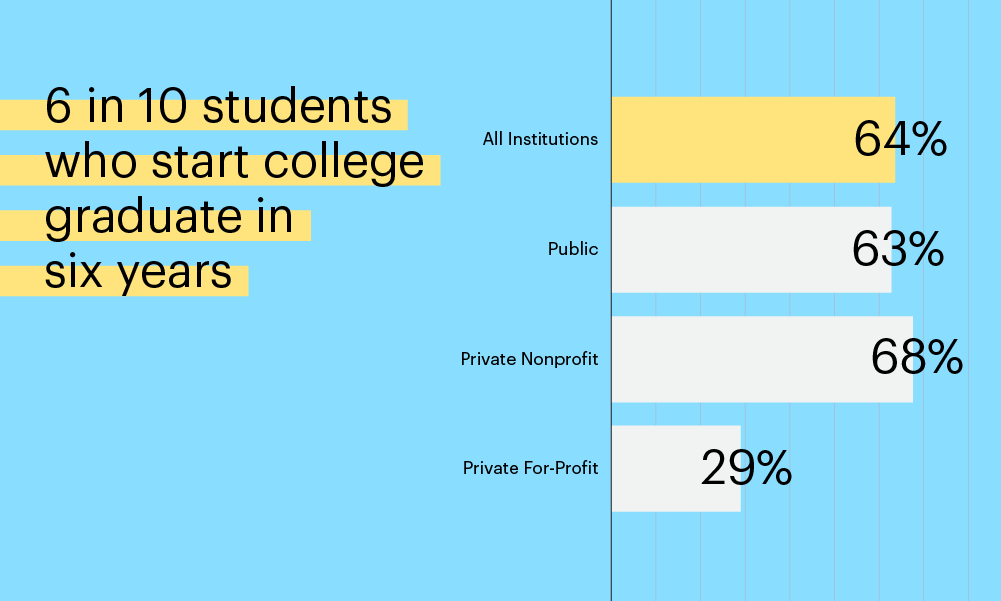
Often small debts, overlooked bills, or expenses get in the way of completion. To address that issue, we created our Completing the Dream Scholarship in partnership with Thurgood Marshall College Fund.
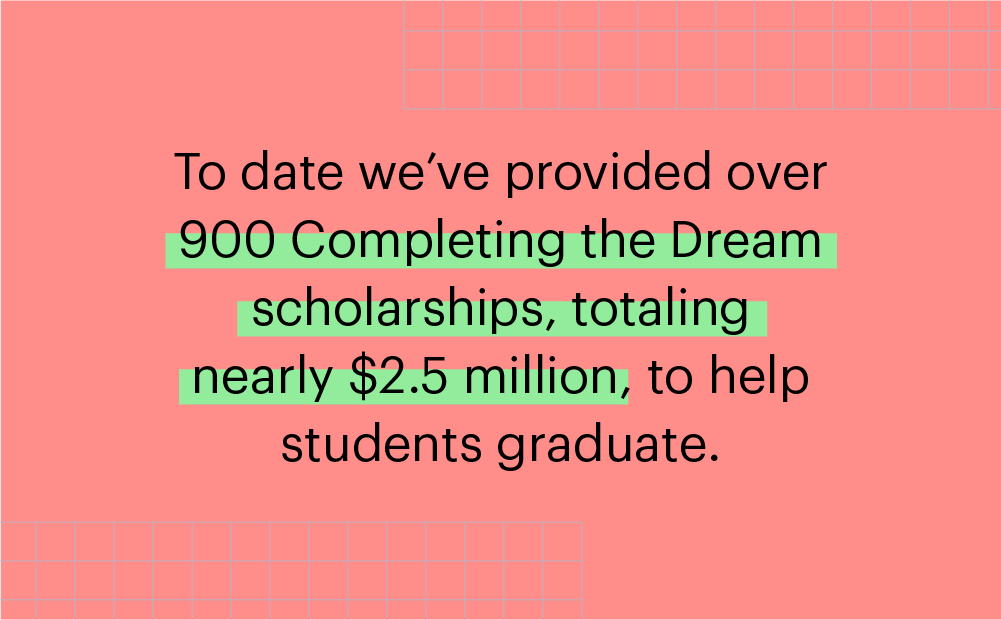
We’ve also partnered with Delaware State University (DSU) to help close the college completion gap. Our $1 million research endowment to DSU funds a comprehensive three-year “Persistence and Completion Pilot Program” to study and understand barriers to college completion and help students return to school to complete their degrees. The research will help advance policy recommendations and best practices that enhance student re-engagement at DSU and other institutions nationwide.
Without meaningful reform to curb overborrowing, the cost of college will keep rising, another generation of students will keep taking on unaffordable debt, and taxpayers will continue footing the bill. Reforming the system and addressing the cycle of ever-growing federal student loan debt will require collaboration among higher education leaders and stakeholders. Sallie Mae is committed to driving meaningful change by promoting a more transparent federal student aid system.

06.10.2025
Three Ways to Limit Overborrowing for Higher Education
The Federal Government Continues to Allow Parents and Students to Overborrow to Pay for College
The federal loan program, originally designed to provide better access to higher education, has made college less affordable, and ushered in an age of overborrowing. Each year, parents and students borrow more than $80 billion from the federal government for higher education. Over the last two decades, loan limits have gone up and the federal government allows students and families to borrow more and more, much of it without ever assessing their ability to repay this debt. The Federal Reserve Bank of New York found much of the increases in loan limits directly translated to tuition increases. And these tuition increases, in turn, are forcing students and families to borrow even more.
Federal Parent loans and federal loans to graduate students are made in virtually unlimited amounts, and without any meaningful assessment of the borrower’s ability to repay them. The impact has been staggering. Today, 3.6 million families owe collectively more than $100 billion in Parent PLUS loans. Federal graduate lending has exploded, adding another $100 billion more to the federal balance sheet, accounting for nearly half of all newly issued federal student loans.
Complex applications for financial aid, and confusion over eligibility for grants and scholarships also contribute to overborrowing.
Here are three ways to help address overborrowing:
Set Reasonable Limits for Federal Loan Amounts
Graduate and Parent PLUS loans now make up nearly half of all newly issued federal student loans. The government continues to allow parents to overborrow for college, leading to mounting debt, delayed retirement, and possible garnishment of social security benefits.
These programs have been labeled ‘predatory’ from experts on both sides of the aisle, and polling confirms most Americans believe addressing the unlimitednature of federal loan programs will protect students, and make college more affordable. Putting reasonable limits on these federal loans can prevent students and parents from borrowing more than they can afford to repay.
Encourage Students to Start with Grants and Scholarships
The Free Application for Federal Student Aid (FAFSA®)* opens the door to more than $100 billion in scholarships, grants, state-based aid, federal student loans and work-study programs each year. Still, roughly 30% of families didn’t apply last academic year, including those from low-income families who would be most eligible for free money like scholarships and grants. Many aren’t applying because they believe their family’s income is too high to receive funds, or they simply lack awareness about the FAFSA.
It’s ’s critical we continue to educate students and families about the importance of completing the FAFSA so they can access free money for college.
Similarly, more than $100 million in scholarships goes unclaimed each year. Too many students and families don’t apply for scholarships thinking they are reserved for top students or athletes, but there are scholarships available for a wide variety of skills and interests. Free resources like Scholly Scholarship Search by Sallie simplifies the process, connecting students and families to scholarships. In addition, Pell Grants, once a cornerstone of college affordability for those who truly needed assistance, haven’t kept pace with rising tuition. They now cover less than 30 percent of the average cost at a four-year public university, down from nearly 80 percent in 1980. What’s more, nearly $4 billion in Pell grants went unclaimed last year. Increasing Pell Grants for those who need the most support is one of the most effective ways to reduce their reliance on borrowing and keep access to college within reach for more students.
Standardize Financial Aid Offers
Financial aid offers too often leave families confused about the true cost of higher education, according to a study by the federal Government Accountability Office (GAO). It found 91% of colleges and universities did not clearly state the net price of college — the amount a student owes after scholarships and grants — in their financial aid offers.
A standardized, transparent offer that clearly itemizes direct costs and fees would help students and families make informed decisions about which school to attend and how much they’re expecting to pay—ultimately helping to avoid overborrowing.
Without meaningful reform to curb overborrowing, the cost of college will keep rising, another generation of students will keep taking on unaffordable debt, and taxpayers will continue footing the bill. These three reforms are important steps toward helping students and families borrow responsibly, while ensuring access to higher education.
FAFSA is a registered service mark of U.S. Department of Education, Federal Student Aid

05.13.2025
Supporting Students from Dream to Degree: Sallie Mae’s Commitment to College Completion
In 2023, Sallie Mae underscored its commitment to closing the college completion gap with a $1 million research endowment to Delaware State University (DSU). The grant supports a “Persistence and Completion Pilot Program,” that identifies and studies barriers to degree completion, helps students return to school, and develops policy recommendations and best practices so students can re-engage at institutions across the country. To date, the program has re-enrolled 213 students — nearly half of them first-generation college students.
This is important work. The number of students who have some college experience, but no degree, is over 40 million. Approximately 3 million are “near completers” who have stopped out mere credits away from degree completion.
Two near completer students — Nataniel (Tannie) Speaks and Chris Kearney — are proof of what’s possible when students get the right support at the right time.
After earning an associate degree, Tannie hoped to continue her education — but full-time work and raising two children put that goal on hold. Years later, she learned about the near completer program and re-enrolled at DSU. Five months later, she earned her bachelor’s degree.
“I still get chills and tears just thinking about it,” she said.
Chris’ journey also spanned decades. He first enrolled at DSU in 2000 with plans to earn a history degree, but stepped away in 2005 to support his growing family. A decade later, when his mother was diagnosed with breast cancer, Chris was determined to finish school for her. But after her passing, he once again put his education on hold.
In 2022, Chris felt a renewed urgency. “I’d reached a certain point in my career path where I felt the need to have my degree completed,” he said. “I thought it would complete me more holistically and professionally.”
In 2023, he graduated with a degree in liberal studies — this time, with his wife, siblings, and children cheering him on. “It felt like I was showing and giving examples to my children about fortitude and perseverance, about how sometimes when life happens, you can transcend, you can overcome and you can change the trajectory of your life for the better,” Chris said.
For Tannie, the impact of earning her degree was immediate.
“I want everybody—kids, young people, old people—to know that it’s never too late to finish your education,” Tannie said. “It’s a second chance at making something new.”
“Reach out to Sallie Mae. They have resources, they have things at their disposal to help encourage you to come back, and not only encourage you to come back, help you see this through to the end of your journey, ” Chris said. “You can do it. You have the wherewithal. You have the grit. Get it done.”
Sallie Mae is committed to supporting college completion. Too many students leave school just a few credits shy of a degree — often due to financial strain or personal circumstances. In fact, our 2024 “How America Completes College” report found that nearly half of non-completer said financial challenges played a role n their decision to leave school. Through programs like the “Persistence and Completion Pilot Program” at Delaware State University — and our “Completing the Dream Scholarship” — we’re helping remove barriers and support more students from dream to degree.

03.17.2025
The Federal Student Aid System Needs Reform
The federal higher education financing system is doing too much for too many and not enough for those who need the most support. The government lends a staggering $126 billion in federal student loans each year. With some programs allowing students and families to borrow virtually unlimited amounts, without considering the ability to repay, it’s no surprise families are overextended and too often overborrowing to pay for college
This system as it currently stands compounds two harms: First, it causes tuition inflation —particularly in areas like graduate school — and then saddles families with debt they cannot reasonably be expected to repay. In fact, recent data shows that in the past 20 years, college costs have grown twice as fast as the consumer price index (CPI). Similarly, a study by the Federal Reserve Bank of New York found that increases in federal lending cause higher tuition.
Reforming the System
Polling shows Americans overwhelmingly believe addressing the unlimited nature of federal loan programs would be an important step both in protecting students and making college more affordable. Reform should start with the unremarkable yet often forgotten principle that borrowing should not be the first option when it comes to paying for college. That means connecting more students to grants and scholarships. Meaningfully increasing Pell Grants, which don’t need to be repaid, can also increase college enrollment and retention rates.
Those who qualify for Pell Grants should also be able to apply for them more easily. In 2023, more than $4 billion in Pell Grants went unclaimed — that’s billions of dollars that could have put higher education within reach for the students with the greatest financial need, students for whom another loan is simply not the answer. Our research also consistently finds that many families are not applying for scholarships because they either don’t know how to access them or incorrectly believe they won’t qualify. That’s why we created a free resource — Scholly Scholarship Search by Sallie — that puts more scholarships within reach for college-going families.
Focusing on Completion
We also need a renewed focus on college completion, not just college access. Those with a college degree earn $1.2 million, or 86% more over their lifetime, than those with a high school degree. Public-private partnerships can play a role in supporting college completion. Sallie Mae has partnered with Delaware State University (DSU), endowing $1 million to research barriers to degree completion and re-engage hundreds of near-completer students to get back on the path to graduation. The program will also develop and advance policy recommendations and best practices to foster student re-engagement nationwide. We’re also removing barriers to completion through our Completing the Dream Scholarship. Together with Thurgood Marshall College Fund, we’ve eliminated nearly $2 million in unexpected costs for students.
The federal student aid system can and should be simpler and work better for students and families. That will require sensible federal student aid reforms, greater transparency and clarity around college costs, connecting students with demonstrated need to grants and scholarships before borrowing and supporting college completion, not just college access. It’s well past time we go beyond quick fixes and focus on meaningful and lasting reform to address these broader issues.

02.07.2025
Who Sallie Mae Is — and Isn’t
We’re in the business of promoting responsible borrowing and advocating for policies and solutions that support higher education access, affordability, and completion.
The Sallie Mae® of today might surprise you. We’re not a part of the federal government or a federal student loan servicer — we’re an education solutions company, providing students and families with free college planning resources and responsible private student loans to cover any gaps in financing after income and savings, scholarships, grants, and other federal financial aid.
Sallie Mae’s approach is rooted in a responsible lending philosophy: students and families should borrow only what they need and what they can reasonably afford to repay. The federal student loan program, however, allows too many students and families to overborrow for higher education. By offering some federal student loans in virtually unlimited amounts, without consideration of a borrower’s ability to repay them, the federal program allows, predictably, unsustainable levels of debt. Recent polling shows most Americans believe addressing the unlimited nature of federal loan programs would be an important step in protecting students and making college more affordable. A recent editorial in the Washington Post agreed. Sallie Mae supports responsible lending, and common-sense reforms to the federal student aid system.
Sallie Mae Supports Access and Affordability
Of the $1.74 trillion outstanding student loan debt in 2024, $1.6 trillion – about 93% – was made and held by the federal government. The remaining 7% are private student loans, which are credit-based and underwritten by numerous private lenders, including Sallie Mae, who assess the borrower’s ability to repay before making a loan.
Borrowing for higher education should be the last step students and families take when paying for college. The first step is to find money that doesn’t need to be repaid, or “free money,” such as scholarships and grants. The second step is to explore federal financial aid by filling out the Free Application for Federal Student Aid (FAFSA®) to access more than $111 billion in federal aid available through the government. If there is a remaining financing gap, a responsible private student loan may be an option.
Our responsible lending approach works. On average, fewer than 3% of our loans in repayment default annually.
Sallie Mae is committed to helping students succeed.
Providing responsible financing is just one part of how Sallie Mae achieves its mission of powering confidence for students and families navigating their unique journeys to, through and immediately after college, while avoiding the pitfalls of unlimited federal lending. Our goal is to help families make informed decisions about higher education and complete their degrees, which is why we provide free financial planning tools for anyone to use, whether they’re a Sallie Mae customer or not.
We guide students and their families by emphasizing financial literacy from day one — before they even take out a loan. Our array of tools and resources to help students effectively plan and pay for college is available for free on SallieMae.com.
Examples of our tools include:
- A free scholarship search tool helps connect students to scholarships based on their skills and interests.
- We provide a variety of college planning tools and calculators to help customers understand how to best save and pay, including a college cost calculator, college planning calculator, and a step-by-step FAFSA guide.
- Through The Sallie Mae Fund, we have provided millions of dollars in scholarships to support access and completion for students from underserved communities. By the end of the 2023-2024 academic year, we awarded over $4 million in scholarships through this program, in partnership with the Thurgood Marshall College Fund.
If students decide to take out private student loans with us, we want to make sure they’re informed. We provide clear communications regarding their choices, including the option for undergraduate and graduate students to make payments while in school. Roughly half of Sallie Mae customers go this route, which helps save on the total cost of their student loans. We also provide consistent communication regarding their loans, including an annual statement detailing what they owe.
We know that financing higher education can be complex and confusing, but Sallie Mae is here to make sense of it. That means ensuring students and families feel confident and informed about how to plan and pay for higher education, and if they need to borrow, providing responsible options to power them throughout their unique journey.
FAFSA is a registered service mark of U.S. Department of Education, Federal Student Aid

11.22.2024
FAFSA: The Quiz
Each year, millions of students and families begin planning for college by completing the Free Application for Federal Student Aid (FAFSA®). It’s the gateway to accessing more than $100 billion in grants, scholarships, and other federal financial aid for higher education. Confusion and misconceptions about the FAFSA, however, persist — leading those who need the most support to potentially miss out on critical aid to make college more accessible and affordable. As an education solutions company and responsible private lender, Sallie Mae helps students and families complete the FAFSA, offering a free step-by-step guide as well as free resources to connect them to scholarships.

11.22.2024
Why Scholarships are Critical for Families Paying for College
Paying for college can be a complex, stressful process. Yet, a new study finds students and families may be missing out on scholarships, which can help make college more accessible and affordable. In fact, about one-third of families didn’t take advantage of scholarships to help cover college costs for the 2023-2024 academic year, according to Sallie Mae’s 2024 How America Pays for College report.
In addition, misconceptions about scholarship availability and eligibility persist. More than half of families (52%) believe scholarships are only available for students with exceptional grades or abilities, and families who didn’t apply cited lack of awareness, doubt in winning, and effort required to apply.
The good news is there are free resources that can help connect students and families to scholarships. Scholarship Search by Sallie easily finds and sorts through hundreds of available scholarships with no registration required.
Don’t Leave Free Money on the Table
Applying for free money is the first step in Sallie Mae’s 1-2-3 approach to paying for college.
Free money, such as scholarships and grants, are often what helps students from underserved communities access and complete higher education. Last academic school year, 88% of students attending Historically Black Colleges and Universities (HBCUs) relied on scholarships and grants to pay for college.
To help expand access and completion for more students, Sallie Mae’s Bridging the Dream Scholarship Program helps those from underserved communities access and complete college. Since 2021, Sallie Mae has awarded over 900 scholarships worth nearly $4 million in partnership with Thurgood Marshall College Fund (TMCF) through the Bridging the Dream Scholarship programs, which also include the Completing the Dream Scholarship and the Bridging the Dream Scholarship For Graduate Students. These scholarships are part of the company’s continued mission to help students access and complete higher education.
Connecting students with scholarships and grants before they borrow is critical. However, more clarity around college costs and greater transparency in federal lending programs would go a long way in helping families make informed decisions about higher education financing.

11.01.2024
Sallie Mae Awards $400,000 in Scholarships to Increase Access to Higher Education
To celebrate National Scholarship Month, Sallie Mae announced the latest recipients of its Bridging the Dream Scholarship for High School Seniors. For the fourth consecutive year, The Sallie Mae Fund has awarded deserving students up to $10,000 each in scholarships to support their higher education goals pursuing a diverse range of degrees, including business, engineering, fine arts, humanities, and more.
Since 2021, Sallie Mae has awarded over 900 scholarships worth nearly $4 million in partnership with Thurgood Marshall College Fund through the Bridging the Dream Scholarship programs, which also include the Completing the Dream Scholarship and the Bridging the Dream Scholarship For Graduate Students. These scholarships are part of the company’s continued mission to help students access and complete higher education—especially those from underserved communities.
Applying for scholarships is critical in helping students and families responsibly pay for higher education, and an important part of the planning process. In 2024, 88% of students attending HBCUs relied on scholarships and grants to cover the cost of college, according to our How America Pays for College 2024 report. In addition to the Bridging the Dream scholarships, Sallie Mae provides Scholarship Search by Sallie, a free resource that connects students and families to hundreds of scholarships, helping them navigate the process easily with no registration required.
Meet This Year’s Bridging the Dream Scholarship Recipients

Aeneas Moore
Hometown: Conyers, GA
School: Howard University
Major: Architecture & Design Studies

Alijah Dean
Hometown: Murfreesboro, TN
School: Tennessee Tech University
Major: Engineering
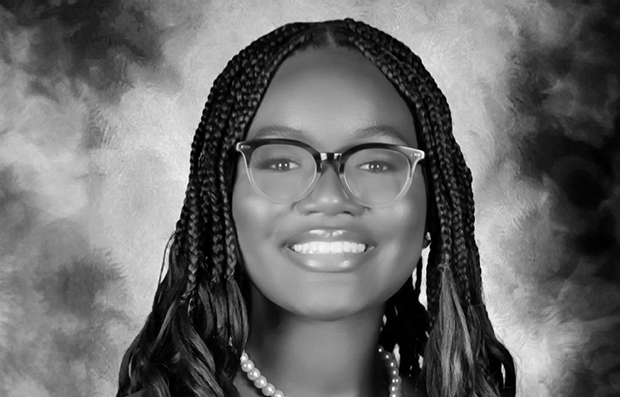
Amaya Morene
Hometown: Jacksonville, FL
School: Howard University
Major: Humanities

Amos Prince
Hometown: Schenectady, NY
School: Rochester Institute of Technology
Major: Mechanical Engineering
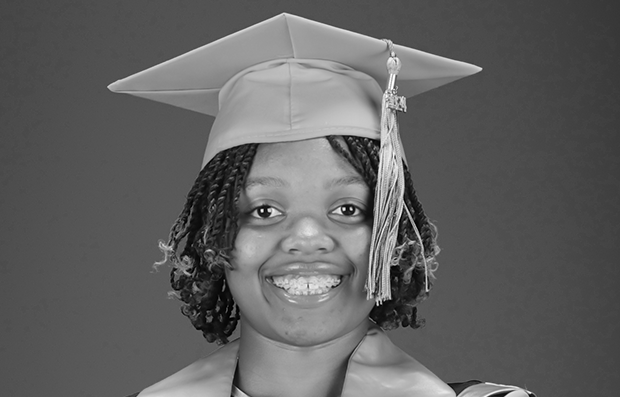
Aniyah Prescod
Hometown: Conyers, GA
School: Hampton University
Major: Architecture
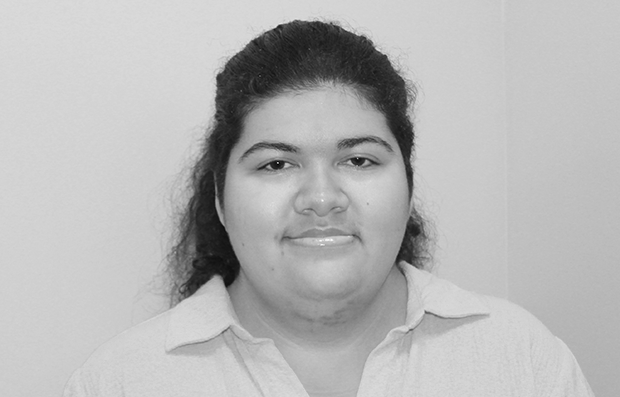
Ashlie Kearns
Hometown: Fayetteville, FL
School: East Carolina University
Major: Computer Science

Bryson Long
Hometown: Eads, TN
School: University of Tennessee at Martin
Major: Cyber Security
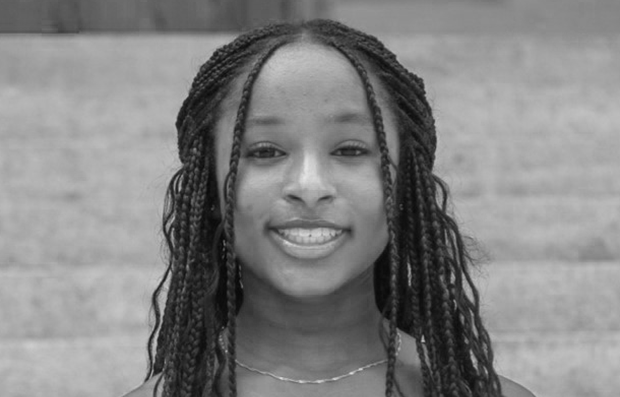
Charity DeBrew
Hometown: Greensboro, NC
School: University of North Carolina Chapel Hill
Major: Music Performance
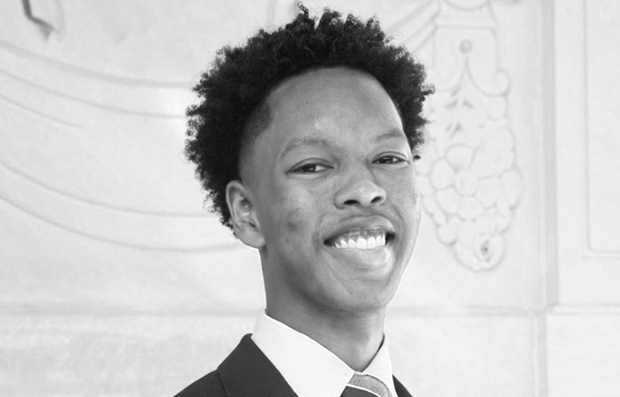
Chris Moore III
Hometown: Macon, GA
School: Howard University
Major: Music Performance

Darius Williams
Hometown: Baton Rouge, LA
School: Morehouse College
Major: Business

David McGowan
Hometown: Rockaway, NJ
School: Kean University
Major: Technology

David Riley
Hometown: Atlanta, GA
School: Morehouse College
Major: Business Administration
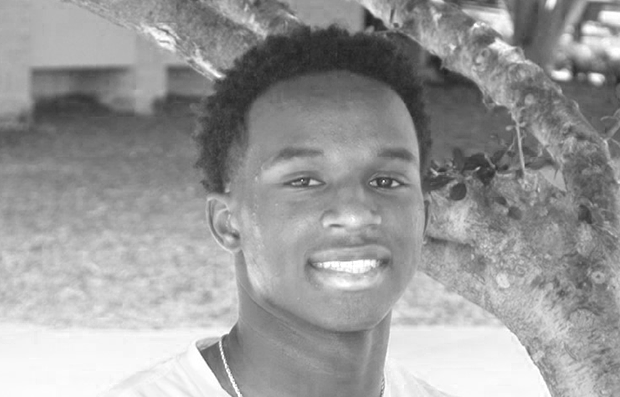
Devin Miller
Hometown: Dallas, TX
School: Prairie View A & M University
Major: Civil Engineering

Heaven Rowell
Hometown: Stoughton, MA
School: Howard University
Major: Business

Ihuoma Mgbahurike
Hometown: Arlington, TX
School: Howard University
Major: Communications

Imani Monday
Hometown: Los Angeles, CA
School: Howard University
Major: Fine Arts

Iyanna Whipple
Hometown: Columbus, OH
School: Howard University
Major: Business

Jada McClide
Hometown: Locust Grove, GA
School: Clayton State University
Major: Health Science
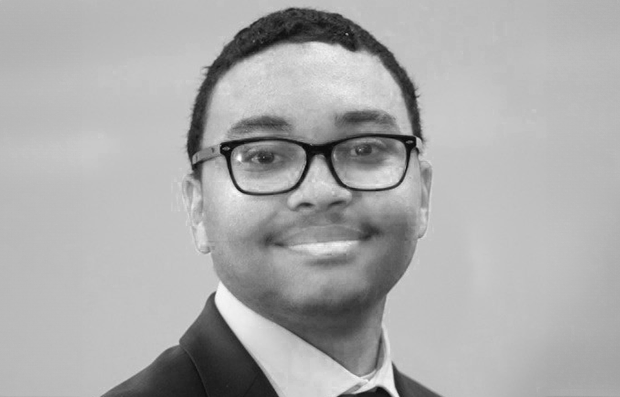
Jayden Locklear
Hometown: Huntersville, NC
School: University of North Carolina at Charleston
Major: Biology
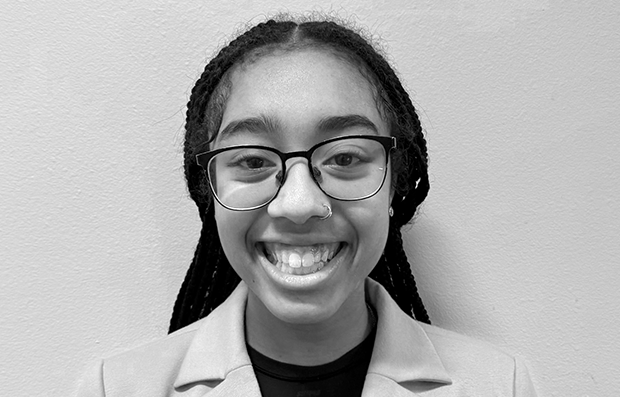
Journi Robinson
Hometown: Crofton, MD
School: Spelman
Major: Humanities

Kaandis Mance
Hometown: St. Petersburg, FL
School: University of Miami
Major: Music in Flute Performance

Kennedi Leary
Hometown: Covington, GA
School: Florida A&M University
Major: Fine Arts

Kennedy McCormick
Hometown: Riverview, FL
School: North Carolina A&T State University
Major: Marketing

Kenneth Stevenson
Hometown: Lawrenceville, GA
School: Morehouse College
Major: Science

Lillian Richards Smith
Hometown: Ellicott City, MD
School: Spelman College
Major: Science

Malani Martin
Hometown: Hanover, MD
School: Winston-Salem State University
Major: Sports Management

Margaret Mirembe
Hometown: Somerville, MA
School: Winston-Salem State University
Major: Kinesiology

Matthew Major
Hometown: Tampa, FL
School: Spelman College
Major: Human Resource Management

Mayah Prelow
Hometown: Mesquite, TX
School: Grambling State University
Major: Nursing
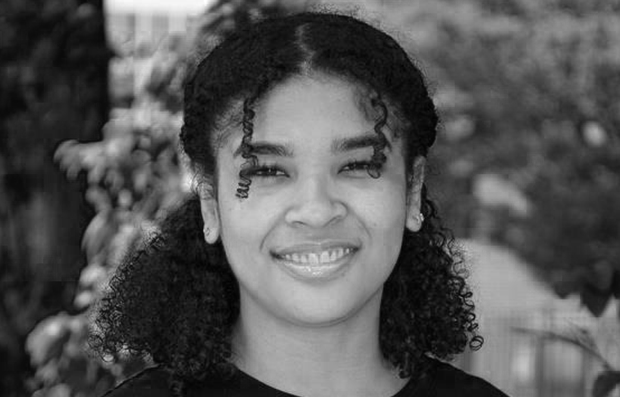
Mayte Segura
Hometown: Providence, RI
School: Vassar College
Major: Undeclared
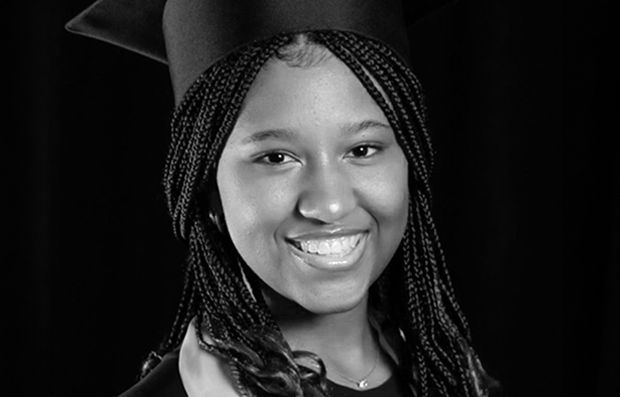
Mikalah Williams
Hometown: Dulles, VA
School: Spelman College
Major: Science

Mira Reynolds
Hometown: Raleigh, NC
School: North Carolina A&T State University
Major: Chemical Engineering
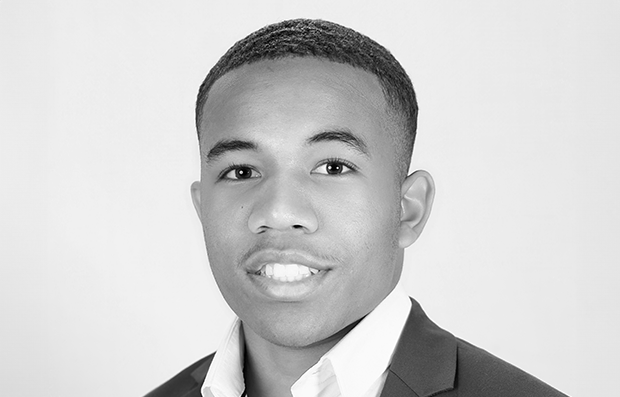
Otis Lofton
Hometown: Columbus, GA
School: Howard University
Major: Pre-Law

RanDaijah Prince
Hometown: Atlanta, GA
School: Howard University
Major: Biology

Rianna Mafnas
Hometown: Winnfield, LA
School: Southern University and A&M College
Major: Fine Arts
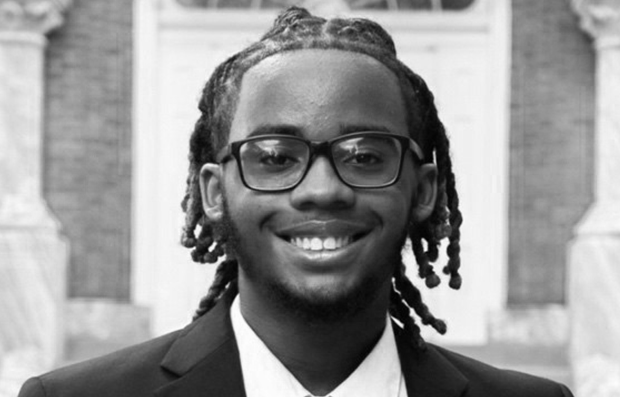
Ryhmin Rawls
Hometown: Philadelphia, PA
School: Morehouse College
Major: Pre-Psychology

Teyana Porter
Hometown: Pensacola, FL
School: Florida A&M University
Major: Psychology
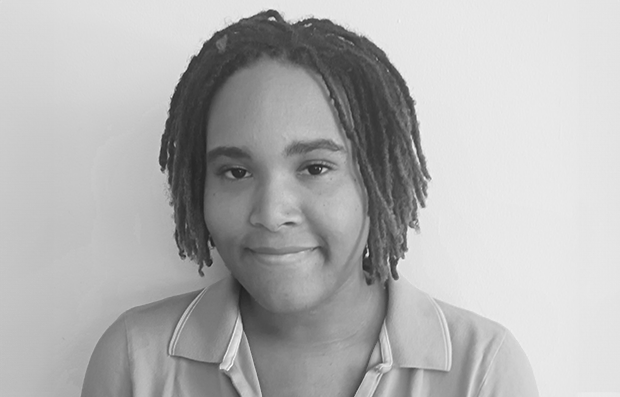
Victoria Pettway
Hometown: Wheatley Heights, NY
School: Tuskegee University
Major: Engineering
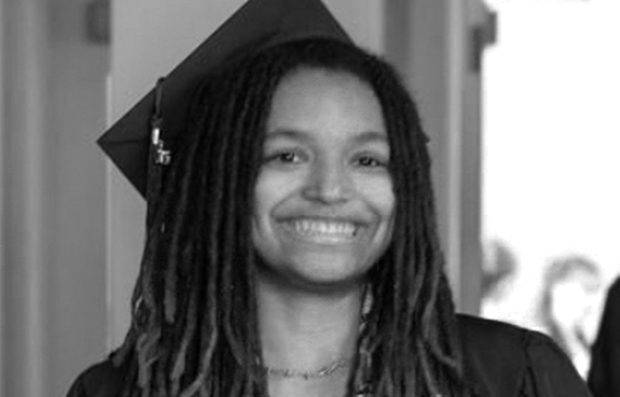
Xochitl Poindexter
Hometown: North Hills, CA
School: Hampton University
Major: Liberal Studies

Yakouba Keita Jr.
Hometown: Stonecrest, GA
School: Morehouse College
Major: Engineering

09.04.2024
How America Pays for College 2024
Education solutions company and responsible private lender Sallie Mae and research firm Ipsos® released How America Pays for College 2024, which provides key insights into how current undergraduate students and parents of undergraduates view higher education and how they plan and pay for it. This industry-leading research considers education funding sources – from parent and student income and savings to scholarships, grants, and borrowed funds – and evaluates trends in payment strategies over time.
From planning to paying, learn how families are navigating their unique higher education journeys.
Surveyed:
- 1,000 parents of undergraduate students (ages 18-24)
- 1,000 undergraduate students (ages 18-24)
- 349 undergraduate students (ages 18-24) from Historically Black Colleges and Universities (HBCUs)
College Spending Holding Steady
Families reported spending $28,409 on average this past academic year – in line with $28,026 in 2022-23. Students attending HBCUs spent an average of $28,545 in the academic year 2023–24.
The majority — 48% — of college costs were covered by family income and savings, followed by scholarships and grants (27%), borrowing 23% and funds from friends and family (2%).
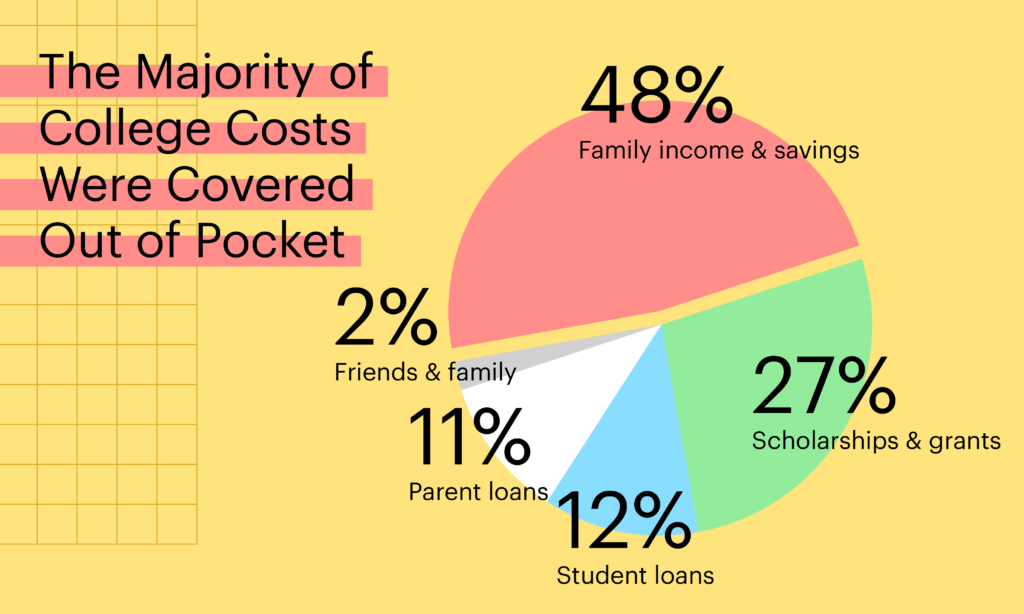
Impact of FAFSA® delays
Seventy-four percent of families submitted the Free Application for Federal Student Aid (FAFSA®) for the 2023-24 academic year — marking a steady increase year over year. However, for those who reported completing the new FAFSA for the 2024-25 academic year, just 29% found the new application easier to complete.
Of those who experienced a delay, 44% reported experiencing stress waiting for financial aid decisions, 21% sought out additional financial aid options, 14% considered switching to a lower-cost school, and 10% transferred schools.
Borrowing is up for students and families.
Parents of HBCU students reported significantly higher balances for Federal Parent PLUS loans on average than families at non-HBCU schools: $14,207 vs. $5,795.
Roughly half of students who borrowed (48%) expect their federal loans to be forgiven; Just 40% of families who borrowed discussed who would be responsible for paying back student loans.
Scholarships can drive college access but misconceptions persist.
Scholarships were used by 64% of families, most of whom cited that scholarships made it possible for their students to attend college. On average, families reported receiving $8,250 in scholarships from their schools.
More than half of families (52%), however, believe scholarships are only available for students with exceptional grades or abilities. 50% of families who didn’t apply for scholarships cited lack of awareness.
To connect more students and families to scholarships, Scholarship Search by Sallie easily finds and sorts through hundreds of available scholarships.
Having a plan to pay makes a difference and boosts confidence.
Nearly 6 in 10 (59%) of families had a plan for how to pay for all years of college before enrollment — a more than 10% increase in 5 years — with higher income families more likely to have a plan.
More than half (54%) of planners felt completely confident in their college financing decisions, compared to just 32% of non-planners.
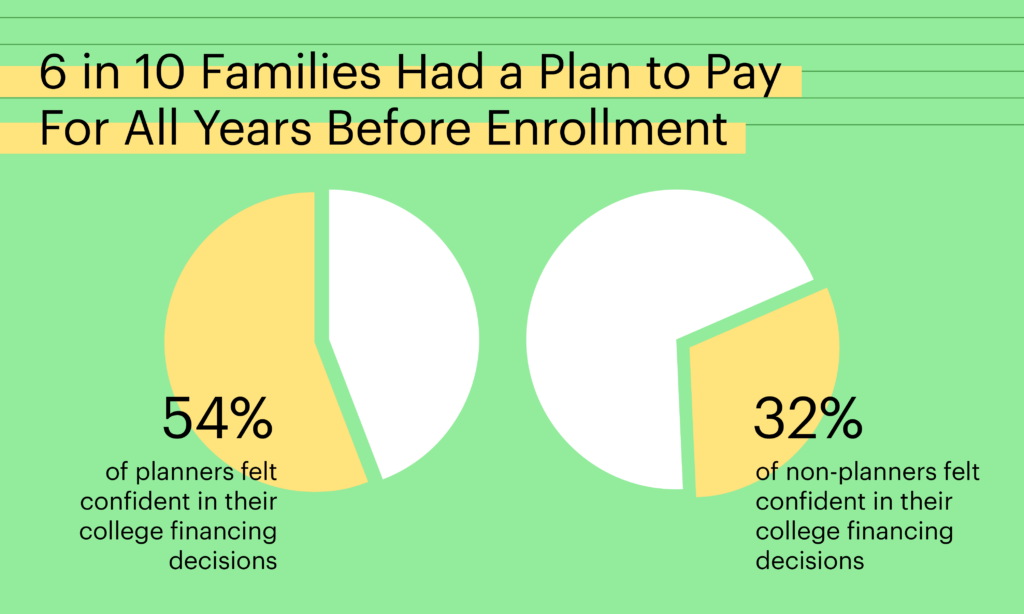
HBCU students agree earning a degree will create more opportunity.
Historically Black Colleges and University (HBCU) families received $14,217 from scholarships and grants. The largest funding source was grants and scholarships, covering 44% of costs while family income and savings covered 29%, borrowed funds covered 26%, and friends and relatives contributed 1%.
88% of HBCU students agree that earning a college degree will create opportunities they wouldn’t have had otherwise, and 81% believe it will translate to a higher earning potential.
These findings confirm families are increasingly recognizing the importance of financial planning for college. That said, the system can be improved by providing more clarity around the actual costs of college, offering greater transparency in federal lending programs, and further connecting students to grants and scholarships.


